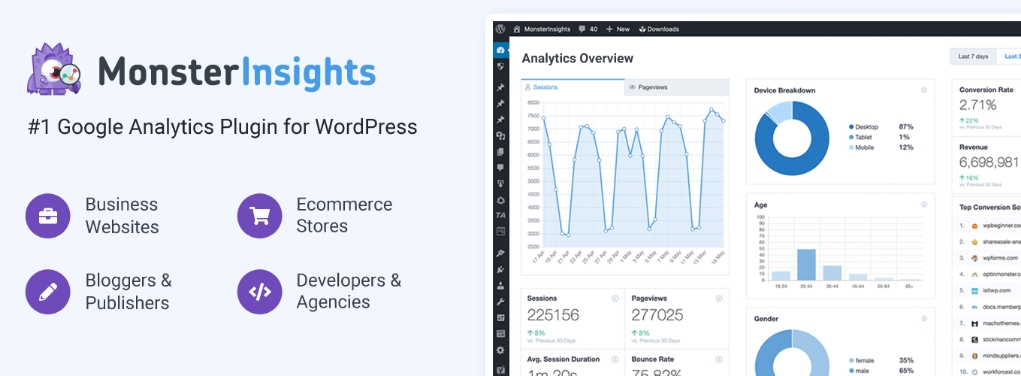In the dynamic technology landscape, full stack developers need to continually upskill across a variety of domains to stay competitive and relevant. This makes having an online platform to showcase expertise and expand reach incredibly valuable.
Enter blogging! Maintaining a developer blog has emerged into an indispensable feather in a modern full stack developer’s cap. In addition to reinforcing your own learning, they enable establishing niche authority, attracting opportunities and accelerating career growth.
Through this guide, I will be covering actionable insights on:
✅ Benefits of having a dedicated developer blog
✅ Step-by-step guide on starting one
✅ Tips for full stack developers to get maximum mileage
Let’s dig in to see why blogging should be an integral part of your learning toolkit as a full stack developer!
Why Should Developers Blog?
Let’s first motivate the value of blogging by going through some tangible advantages:
⏱ Forces Structured Learning
Putting thoughts and lessons learned into writing inevitably condenses scattered concepts into structured narratives. This retention helps solidify core foundations further.
📈 Tracks Progress Over Time
A blog creates an implicit journal of milestones conquered with years of posts highlighting career growth through changing technologies and ideas.
🔎 Discover New Connections
The research and analysis required for developing coherent blog posts reveals hidden bridges between loosely coupled topics in unexpected ways.
⚡ Speeds Up Problem Solving
Publicly posting solutions as blog articles incentivizes finding optimized approaches faster to avoid sub-optimal advice percolating out.
💡 Sparks New Post Ideas
Each completed blog piece containing hard-earned knowledge inspires additional offshoot concepts worth covering in derivative posts for compounding benefits.
📣 Establishes Domain Authority
Consistently producing technical blogs on a specialized area conveys hard-earned area mastery that steadily builds acclaimed authority.
With those upside factors covered, let’s transition how full stack developers specifically can utilize blogging effectively.
Blogging Tips for Full Stack Developers
Given full stack developers bounce between frontend, backend and infrastructure domains frequently - how can they optimize blog value? A few tips:
🔀 Link Inter-Domain Concepts
Elaborate concepts spanning multiple areas like securing frontend apps via infrastructure controls or CSS complexity reflecting backend coupling.
🥇 Highlight Core Fundamentals
Focus beginner backend posts on core database schemas rather than niche optimizations. For frontend content, emphasize universal CSS layouts before JavaScript magic.
🔧 Demo Practical Examples
Include source code, images and videos demonstrating applied concepts for greater clarity rather than only theoretical descriptions alone.
🛠️ Tools & Technologies
Feature underrepresented tools through blog posts highlighting use cases like using Docker for frontend testing reproducibility or Postgres full-text search capabilities.
📦 Package Series
Exploit the full depth of specific technologies with series spanning beginner tips to advanced troubleshooting guides on say Kafka or React.
Full stack developers have unique opportunities to extract cross-domain synergies with strategic blogging. Now finally, let’s run through starting your own developer blog!
Guide to Starting a Developer Blog
While passion for writing fuels long term success, consider these steps for smoothly commencing your blogging adventure:
1️⃣ Pick Your Niche
Determine an initial content area matching your experience like JavaScript, DevOps, Cybersecurity etc allowing quickly ramping up credible posts.
2️⃣ Choose Platform
Select an established blogging platform like WordPress or Ghost providing ready templates, storage and exposure instead of reinventing the wheel.
3️⃣ Setup Domain & Hosting
Purchase a custom domain reflecting your brand and hook it up with managed hosting for handling traffic spikes as readership expands.
4️⃣ Install Theme
Identify visually aesthetic blog templates aligning with your niche for reader engagement including features like SEO, comments etc.
5️⃣ Start Writing!
Begin authoring those inaugural posts elaborating concepts you know well showcasing your writer’s voice and analysis abilities.
6️⃣ Promote Content
Strategically promote new posts through social channels like Twitter or LinkedIn along with niché developer forums driving early traffic and feedback.
7️⃣ Track Analytics
Analyze page visitor trends, feedback and shares to refine content resonating best with your audience for sticking to your strengths.
8️⃣ Iterate Improvements
Use insights uncovered to realign blog roadmap, post frequencies, promotion channels and audience targeting for perpetually enhancing impacts.
With the nuts and bolts in place, it is time to let your ideas, experiences and thoughts escape into the blogosphere. Soon readers worldwide will be benefitting from your developer perspectives while accelerating your authority. So when are you starting yours?
Conclusion
And that neatly wraps up our developer’s complete guide to blogging covering:
● Multifold benefits for career growth
● Strategic tips for full stack developers
● Step-by-step guide to launch a blog
Effective content marketing today goes hand-in-hand with crafting personalized platforms that syndicate expertise. We highly recommend developers to start blogging from early stages even while learning.
The compounding effects over time by documenting skills and spreading knowledge really pay off with opportunities to enhance reputation.
So what’s holding you back? Unlock your inner blogger and let your ideas inspire fellow developers worldwide! We can’t wait to read your stories.



